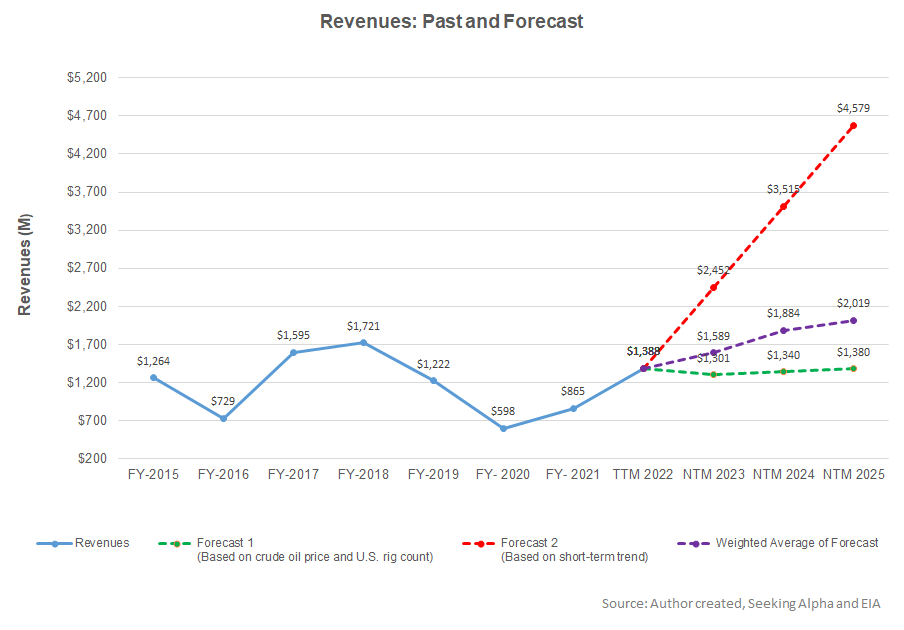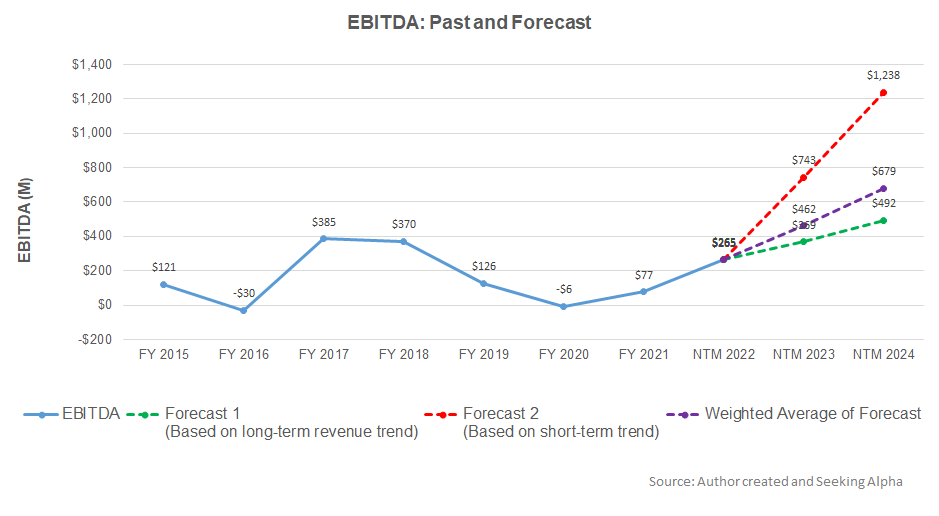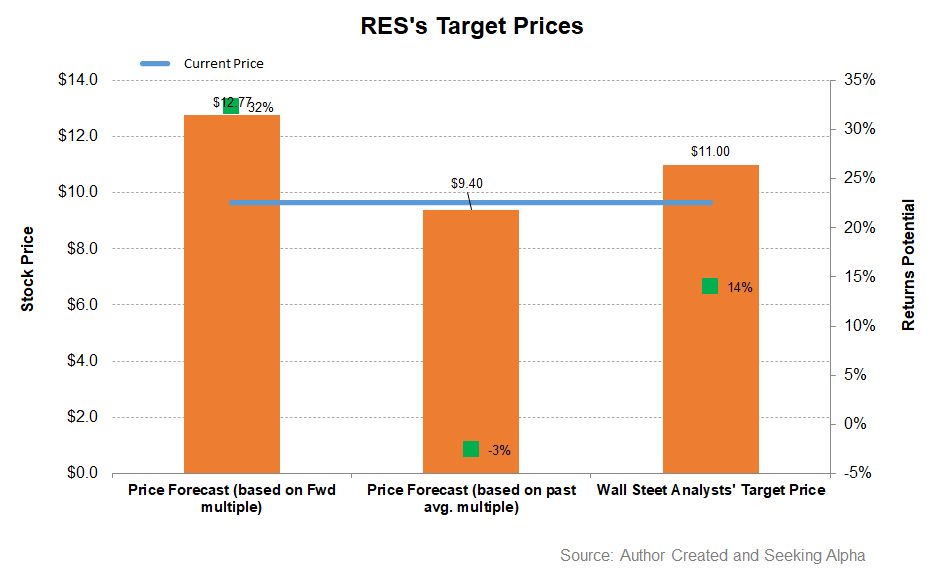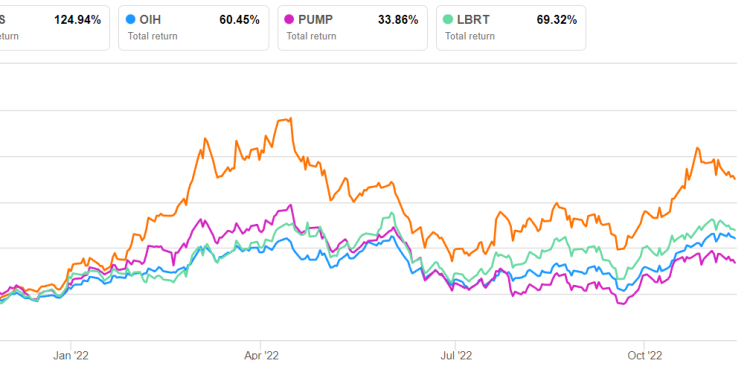- The regression model suggests that RES’s revenue growth can accelerate in NTM 2024 compared to NTM 2023.
- EBITDA can increase sharply in the next couple of years.
- While relative valuation suggests the stock is overvalued versus its peers, we think the stock has a negative bias at the current level.
Part 1 of this article discussed RPC’s (RES) outlook, performance, and financial condition. In this part, we will discuss more.
Linear Regression Based Forecast

Based on a regression equation on the key energy indicators (crude oil price and the US rig count) and RES’s reported revenues for the past seven years and the previous four quarters, revenues can increase by 14% in the next 12 months (or NTM 2023). The growth rate can accelerate (19% up) in NTM 2024 but moderate in NTM 2025.

Based on the regression model and the forecast revenues, the company’s EBITDA can increase multifold in NTM 2023. According to the model, EBITDA can continue to grow at a more moderate rate (74%) in NTM 2024.
Target Price And Relative Valuation

Calculating the EV using RES’s forward EV/EBITDA multiple shows that the returns potential using the forward multiple (12.8x) is higher (32% downside) compared to the returns potential using the past average multiple (3% downside) and sell-side analysts’ estimates (14% upside) in the next year.

RES’s forward EV-to-EBITDA multiple contraction versus the current EV/EBITDA suggests a similar EBITDA growth compared to the peers, which typically reflects in an at-par EV/EBITDA multiple. However, the company’s EV/EBITDA multiple (7.8x) is marginally higher than its peers (PUMP, NR, and LBRT). So, the stock is slightly overvalued with a negative bias versus its peers.
Wall Street Analysts’ Rating

According to data provided by Seeking Alpha, one sell-side analyst rated RES a “buy” in the past 90 days, while four of the analysts rated it a “hold.” Only one analyst rated it a “sell.” The consensus target price is $10, suggesting a 9% downside at the current price.
What’s The Take On RES?

After reactivating idle pressure pumping equipment over the past couple of quarters, RPC appears to be steadying. Given the improved hydraulic fracturing activity, it is likely to add another pressure-pumping fleet (on a net basis) in 2023. With pricing improvement a longer duration contracts, its operating margin recovered sharply in Q3. So, the stock outperformed the VanEck Vectors Oil Services ETF (OIH) in the past year.
However, a higher activity level necessitated capex to rise steeply over the past year, leading to negative free cash flows in 9M 2022. Nonetheless, the company expects to generate positive FCF in 2023. This, along with zero debt and a healthy liquidity base, would make RES a healthy investment avenue. The stock is slightly undervalued versus its peers. The stock price may have run too high too soon. Investors might want to wait for it to decline before the stock becomes ripe for a medium-term recovery.













